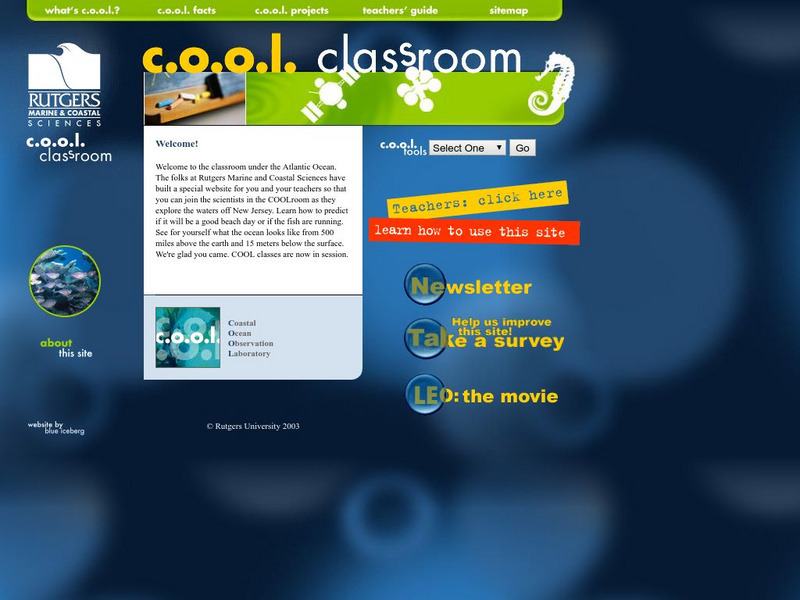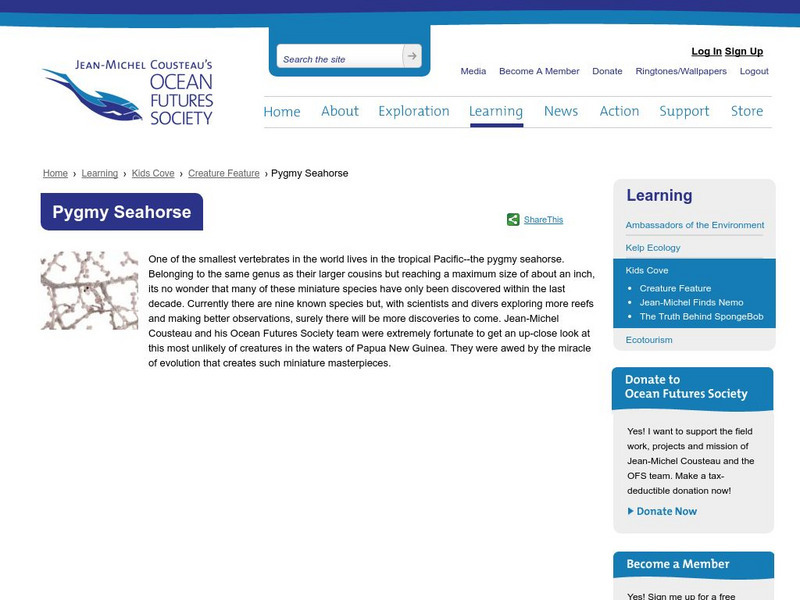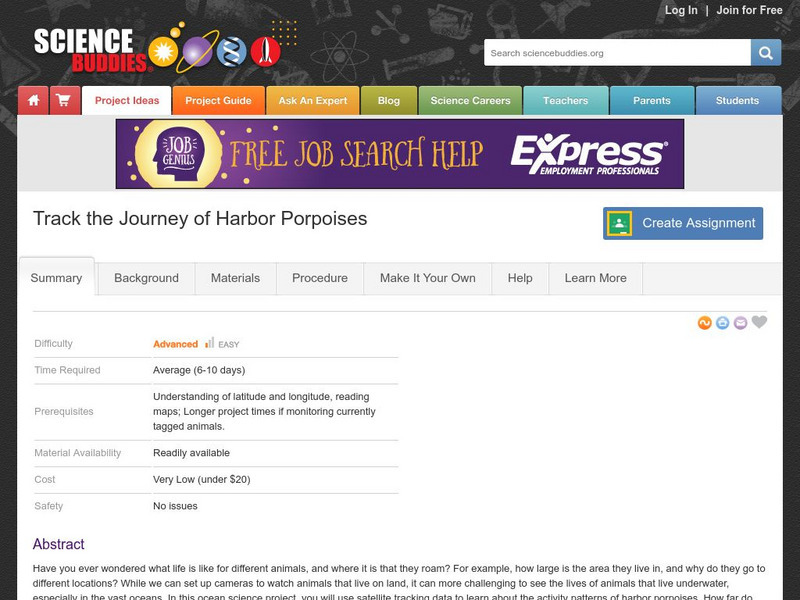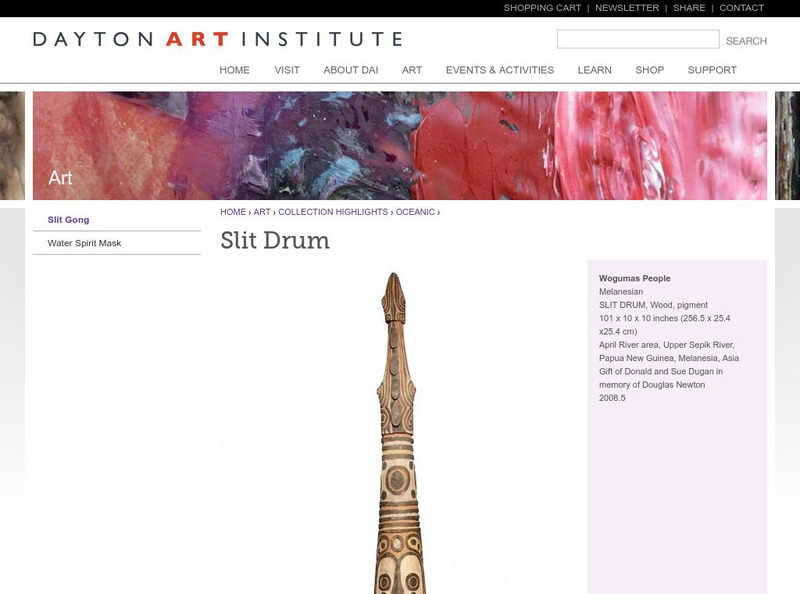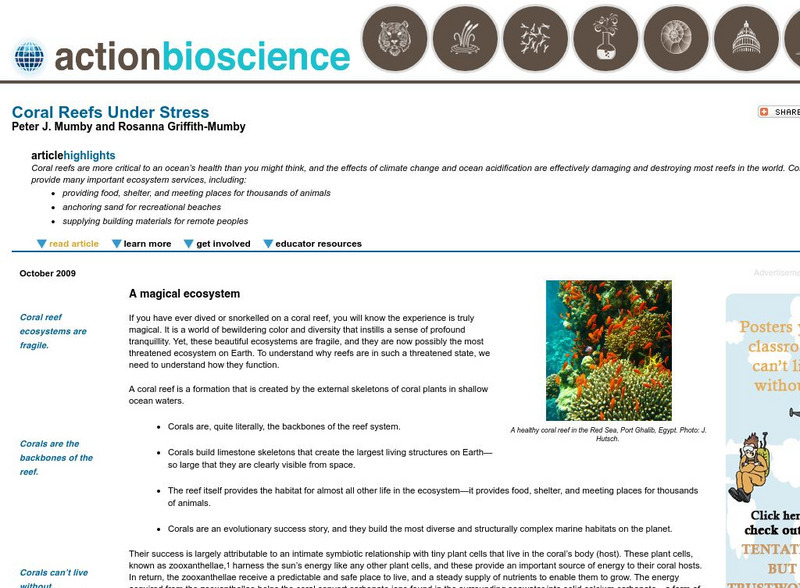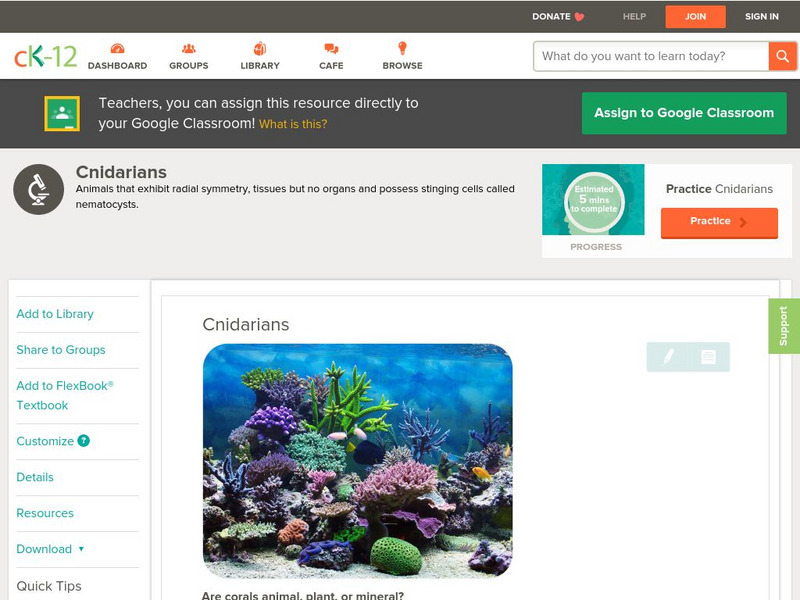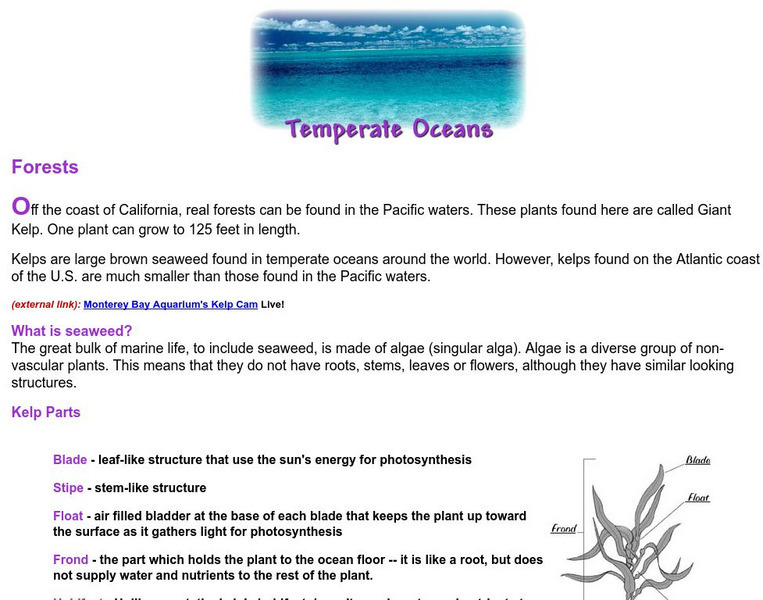Science Buddies
Science Buddies: Timing the Tides
Have you ever been to a tide pool during low tide? Some intertidal animals in the low tide zone are left in a tiny pool of water when the tides go out. Other intertidal animals that live in high tide zones may be left to dry out during...
Other
Rutgers Marine & Coastal Sciences: Cool Classroom
Students and teachers can explore the work of marine scientists and observe the ocean from their computers. Learn about Rutgers Coastal Ocean Observation Laboratory, discover why oceanography is important, and see what life is like in...
The Franklin Institute
Missouri Botanical Garden: Ocean Facts
Click on all the links to find out many interesting facts about the ocean. Why is the ocean blue? Why is it salty? Where do most of the animals and plants live? Which ocean is the biggest? The deepest? How much of the Earth is covered by...
Other
Ocean Futures: Kids: Creature Feature: Pygmy Seahorse
Learn about this truly unique animal and where it can be found, in Papua New Guinea. Includes video.
National Geographic
National Geographic: Adapting Under Pressure
Students learn about James Cameron's Challenger Deep dive and about the marine animals that live in different layers of the ocean. They then study the characteristics of the hadalpelagic zone at the bottom of the ocean, and imagine and...
Globio
Glossopedia: Seals
Seals are mammals that live parts of their lives on land and other parts entirely in the water. They breed and care for their babies on land, but spend most of their lives in the ocean. This article provides an in-depth look at these...
Smithsonian Institution
Smithsonian National Zoo
Here is the National Zoological Park right at our fingertips. Students will find many things to explore at this colorful and engaging site. Any study of animals will have a successful start here. Chances are students can catch their...
Missouri Botanical Garden
Missouri Botanical Garden: Temperate Oceans Light Zones
Discover the three zones in the ocean which are determined by the amount of light received from the sun. Pictures illustrate the three zones and there is a listing of the animals that live in each zone.
Sesame Street
Sesame Street Games
These interactive games allow young children to explore the jungle, the oceans and the arctic regions. Children can look for animals in that area of the world.
World Wildlife Fund for Nature
Wwf: Our Earth: Ecoregions: Habitats: Oceans
An introduction and overview of the ocean habitat, the largest habitat on Earth. Includes links to information about three animals that live in this habitat.
Teachers.net
Teachers.net: Who Lives in the Sea? A Class Book
A lesson plan where students work together to create an alphabet book filled with ocean plants and animals.
Science Buddies
Science Buddies: Harbor Porpoise Movement
In this project you can use archived satellite tracking data to learn about activity patterns of harbor porpoises. How far do they travel? Can you find patterns in the routes individual animals take? Can you correlate their route with...
Other
Dayton Art Institute an African Slit Gong
Art and music are very much related. In fact, the African culture often times designed fun looking instruments like the gong on this website. Includes directions on how to make your own gong.
Enchanted Learning
Enchanted Learning: Biomes
Discover the hidden treasures in the different habitats on the earth! The earth is filled with many biomes. Examples of different biomes are listed and include hyperlinks to additional information such as the animals found there.
Globio
Glossopedia: Environments
This article defines "environment" as a collection of animals and plants in a specific landscape and climate. The concept of differing types of environments is introduced. The impact of humans on environments and all environments'...
Ducksters
Ducksters: Fish for Kids: Learn All About Aquatic and Ocean Marine Life
Kids learn what makes up a fish. What are gills and how do they breathe in the water?
American Institute of Biological Sciences
Action Bioscience: Coral Reefs Under Stress
Coral reefs, home to many vibrant plants and animals, are suffering from the affects of climate change and the increase of acid in ocean waters. Delve into the benefits and concerns of these beautiful ecosystems.
Energy4Me
Energy4me: Oil and Natural Gas Formation
Students will learn that oil and natural gas taken from the earth's crust today originated as small plants and animals that lived in the ocean millions of years ago.
CK-12 Foundation
Ck 12: Life Science: Cnidarians
[Free Registration/Login may be required to access all resource tools.] Cnidarians, in the phylum Cnidaria, include organisms such as the jellyfish and sea anemones. These animals are found in shallow ocean water. Learn more about...
Wonderville Media
Wonderville: Sea Turtles
Sea turtles are one of the earth's oldest animals living in the ocean. They have been around since the time of the dinosaurs. That's over 100 million years! Sea turtles are different from land turtles in two primary ways. Learn about Sea...
Utah STEM Foundation
Utah Stem Action Center: Sorting Living Things
Living things live in places that have what they need to survive. Since fish don't breathe air, they need to live in an ocean. That one is pretty obvious, but what about different kinds of trees? Can all animals that breathe air live...
Science Struck
Science Struck: The Differences Between Benthic and Pelagic Zones
Learn the characteristics of these two oceanic zones and of the plants and animals that live in them.
Missouri Botanical Garden
Missouri Botanical Garden: Giant Kelp
Learn about forests under the Pacific Ocean! Giant kelp is a forest under the ocean that is divided into layers based on the kind of animal life found there. Kelp is useful in making adhesives, dairy products, and pharmaceutical...
Other
Aquarium Kaiukan: Creatures and Anecdotes (Japanese)
The Japanese-language homepage of the Osaka Kaiukan Aquarium, one of the largest in the world. It introduces visitors to the creatures that inhabit zones of the Pacific, from the Aleutian Islands in the north to Antarctica in the south....



